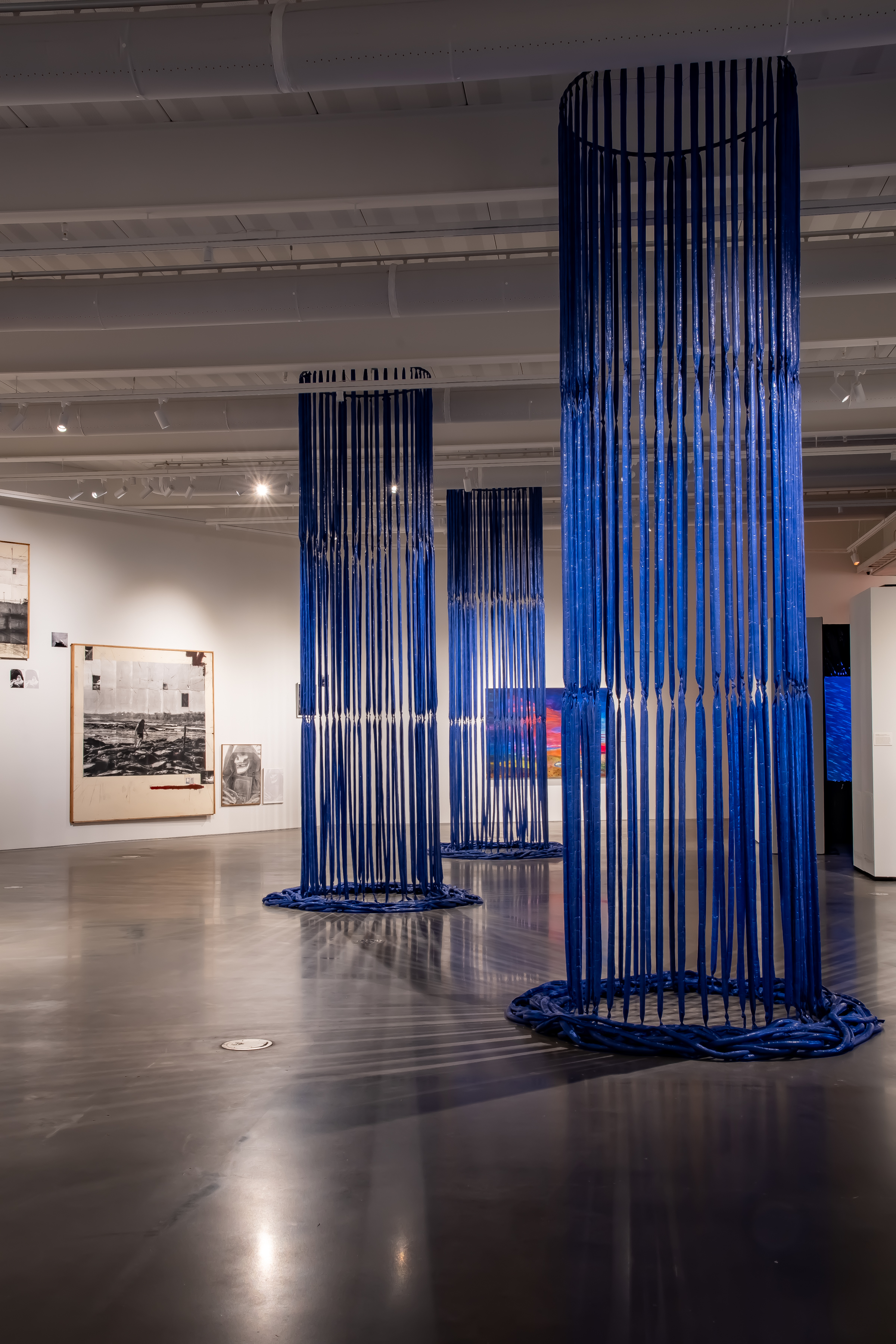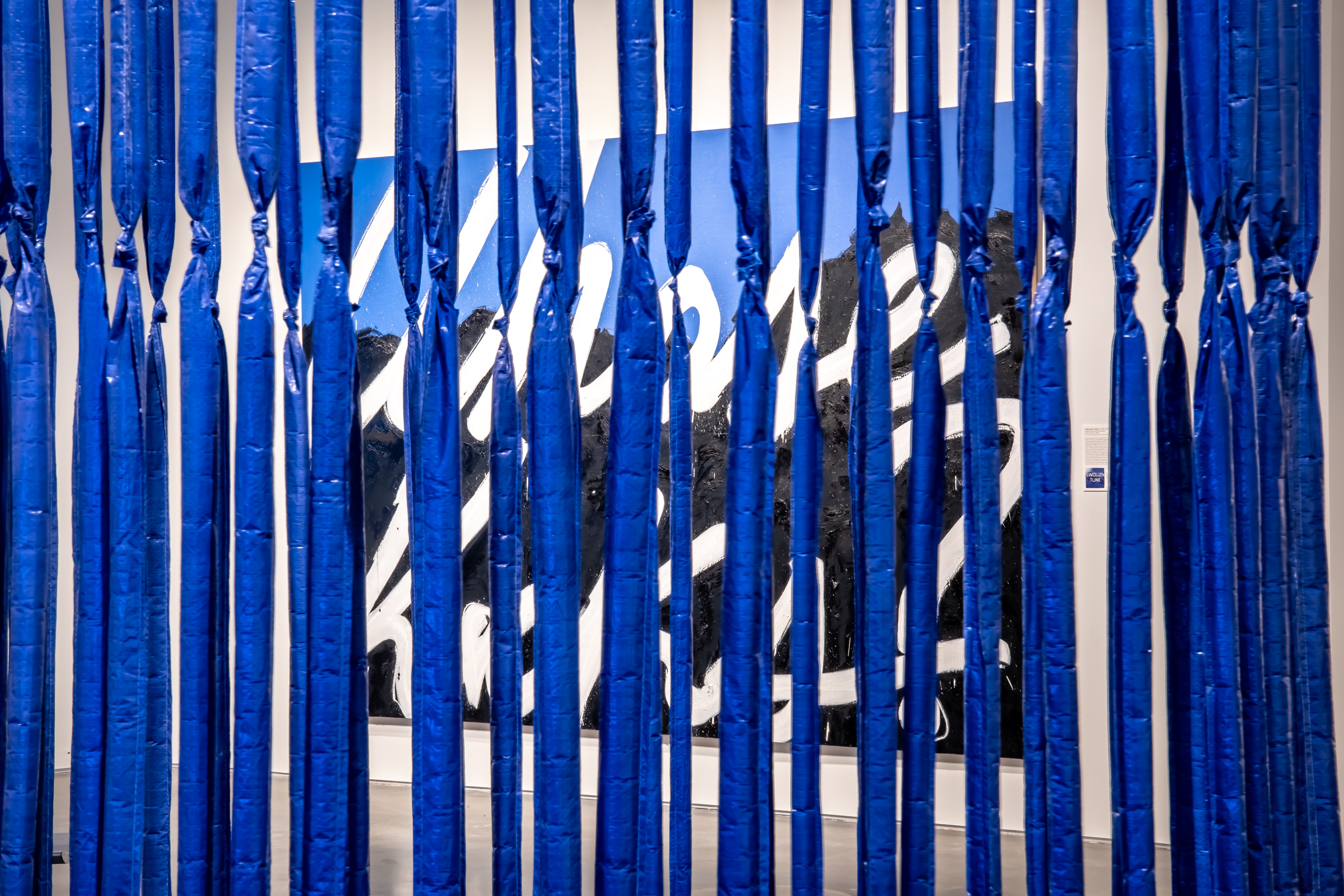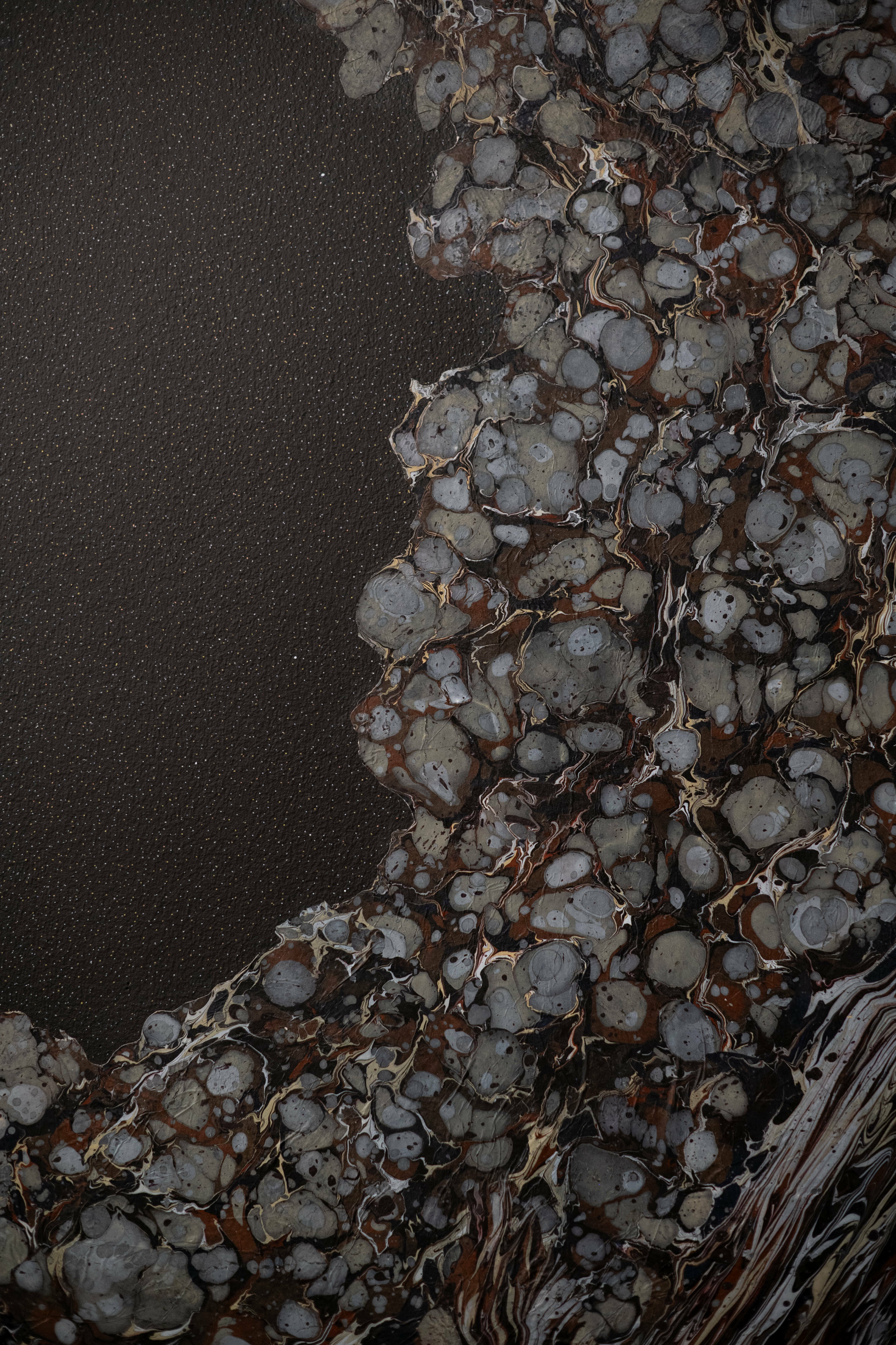ArtNow: The Soul Is a Wanderer


ArtNow: The Soul Is a Wanderer


Moira RedCorn's Ma^zha^ tseka Ma^thi^ (Moving to a New Country) (2022)
ArtNow: The Soul Is a Wanderer illuminates themes of reckoning, renewal and reimagining futures of our own making. Several of the works address this forward-thinking mentality, like Kite’s Wóaič’ibleze (Self-Reflection) and Elspeth Schulze’s The Sparing Ones. Others consider the past and the present, re-contextualizing histories in order to understand and move through the current day, like Moira RedCorn’s Ma^zha^ tseka Ma^thi^ (Moving to a New Country). This reminder to analyze the existing moment opens the conversation to alternate ways of thinking, through our lives and through the exhibition.
Taking cues from the works on view, we’re exploring varying ways of engaging with the gallery, including hidden gems and further insights into the art and its creators. While wall labels give visitors a glimpse into the purpose and creation of a piece, they are limited in how much they can expand (mostly due to word count and wall space!).

Ashanti Chaplin's Earth Elegy (2023)
In order to remedy that, we’ve selected a few of the ArtNow works to investigate further, and give you, the viewer, a richer and deeper understanding of both the artists and the wonders they make. Who better to chat with than the person who keeps track of every piece, from conception to the moment it’s placed in the gallery?
“As Registrar, I oversee the care, documentation and maintenance of artworks on view at Oklahoma Contemporary,” says Beth CreMeens. “This exhibition was exciting and challenging to put together in ways that are totally apart from the typical process of a traveling or guest-curated show. For an average exhibition, most, if not all, of the artworks have been created and are sitting with a collector, in a gallery or in the artist’s studio. It’s not uncommon to have a few pieces that act as a sort of surprise from an artist or two, coming straight from their studio and to the museum."

Elspeth Schulze's The Sparing Ones (2023)
"However, almost all the artworks included in ArtNow: The Soul Is a Wanderer came straight from the studio or were created on site! This meant that my team and I had to really be in the pocket of each of the artists to not only understand how their vision for the artwork was forming over time, but also to get a sense of what logistical challenges would come with installation.”
How are Schulze’s blue columns anchored? What medium makes up Ashanti Chaplin’s towering obelisk? How much paper is in Molly Kaderka’s black-hole creations? How many layers did Moira RedCorn paint? Let us explore!
Up first: Schulze’s trailing ladder-like installation.
“One of the first things you see when you enter the gallery are Elspeth Schulze’s The Sparing Ones, hanging down from the ceiling like a beautiful waterfall and crashing down to the floor in a braided design,” CreMeens says. “In the initial drawing for this piece, it was tough to understand the presence that this artwork would have in the gallery. Each column weighs about 250 pounds with the bottom sections of tarp filled with sand to ground the piece. At once they appear light and whimsical and yet also hold a monumental stance both in the space they occupy and in the material makeup of the work.”

Schulze's The Sparing Ones (detail) (2023)
These 250-pound cones are attached to the top of the gallery via powerful magnets, while the blue tarp itself is a symbol of the artist’s memories of hurricanes and a warning to the next generations.
“I grew up in southern Louisiana, where water has as much hold as land,” Schulze says in an artist statement. “Blue tarps and sandbags are common sights in hurricane threatened areas and serve as strange harbingers of climate change. The use of petroleum leads to extreme weather patterns, while the byproducts of petroleum protect and patch our threatened spaces. We ward off rising water with petroleum-based sandbags and cover hurricane damaged roofs with petroleum-based tarps. Blue tarps are barrier materials, and in my work tubes of tarp often stand in for water, becoming the thing they are meant to resist.”
“Though landlocked, Oklahoma, like Louisiana, is an oil-based economy. These petroleum products carry the weight of extractive efforts of occupying space.”

Molly Kaderka installing Ferrous Form/Unform (2023)
While Schulze is touching on the land and waters we live upon, Kaderka’s massive paper installation brings us up into the atmosphere. The process for marbling Ferrous Form/Unform was tedious and required enormous amounts of time and patience. The artist’s practice included several layers of hand printing and marbling the two-football-fields’ worth of paper. If you aren’t a sports fan or can’t remember how many feet are in a yard, that’s 600 feet of celestial exploration, folks.
“What visitors don’t see when they look at Molly Kaderka’s Ferrous Form/Unform is the sheer intensity of labor that it took to create her glimpses into time and space,” CreMeens says. “For two weeks straight, Molly was one of the first people to arrive in the gallery and would stay with me or another installation team member well after closing. Toward the last leg of her installation, a few of Molly’s assistants spent days just standing for hours creating the small dots you see at the center.”

Kaderka's Ferrous Form/Unform (detail) (2023)
In order to ensure the placement of the work would suit Kaderka’s expectation, the artist used hallway passages and open office spaces at Oklahoma State University, where she is an Assistant Professor to fit together the two circular portals. Once at Oklahoma Contemporary, it took Kaderka and four artist assistants to place all of the fragments just right.
Kaderka has us searching the past, finding similarities in the celestial objects made of atoms we all are, while Schulze has us thinking of the future, ways to get there and how to bring what we need. We turn to Latinx artist Isaac Diaz to show us the present, with information from what came before and hope for what we can imagine.
“Installation informed the layout for Diaz’s work in the exhibition,” CreMeens says. “In the original plan, his pieces were grouped together in what appeared to me as more of a shrine-like display. As we began to get closer to installation time and work with Isaac in the space, the choice was made to separate his pieces throughout the gallery. This allows for his works to speak more directly with other objects in the show and with the viewer.”

Isaac Diaz' Projection///Placement (2023)
Diaz’s ArtNow works are a guidepost for building a space for oneself when all that’s been given is fragments and rubble. Pulling from Latin American and Pre-Columbian histories, the artist investigates the loss of language, culture and tradition, and how necessary it is to recognize these narratives while building in the present and for the future.
The artist presents his ceramic works under the name Uoqaus, an adaptation of the Finnish word “huokaus,” meaning to sigh.
“Here, the relationship between ceramics and people is explored. Both are uneven and imperfect yet made of earth” Diaz says. “While looking to these connections, Uoqaus also reinterprets ancient stories and traditions. Uoqaus mostly finds inspiration through the old, and alive, cultures of Latin America. Uoqaus is a sigh of what can be, a desire for something else while creating that.”

Isaac Diaz' Paracas (2023) and Guias Vase (2023)
From terrestrial to celestial, past to future, ArtNow: The Soul is a Wanderer offers ample opportunity to explore yet-to-be-written narratives, not-so-distant memories and ready-to-be-lived realities. Explore away, world makers. We’ll meet you in the gallery.
Images:
Installation view of ArtNow: The Soul Is a Wanderer. Photo: Ann Sherman.
Installation view of Moira RedCorn's Ma^zha^ tseka Ma^thi^ (Moving to a New Country) (2022). Photo: Photoville.
Installation view of Ashanti Chaplin's Earth Elegy (2023). Photo: AJ Stegall.
Installation view of Elspeth Schulze's The Sparing Ones (2023). Photo: Ann Sherman.
Detail view of Elspeth Schulze's The Sparing Ones (2023). Photo: Ann Sherman.
Artist Molly Kaderka installing Ferrous Form/Unform (2023). Photo: Cassandra Watson.
Detail view of Molly Kaderka's Ferrous Form/Unform (2023). Photo: Lexi Hoebing.
Installation view of Isaac Diaz' Projection///Placement (2023). Photo: Ann Sherman.
Installation view of Isaac Diaz' Paracas (2023) and Guias Vase (2023). Photo: Ann Sherman.
Return to New Light.
Monday 11 a.m. - 6 p.m.
Closed Tuesday
Wednesday 11 a.m. - 6 p.m.
Thursday 11 a.m. - 9 p.m.
Friday - Sunday
11 a.m. - 6 p.m.
see additional holidays
Visit us at
11 NW 11th St.
Oklahoma City, OK 73103
Phone: 405 951 0000
Fax: 405 951 0003
info@okcontemp.org
SEND MAIL TO
Oklahoma Contemporary
P.O. Box 3062
Oklahoma City, OK 73101
STAY UP TO DATE
Join our mailing list to learn about our events, exhibitions, education and more.
©2024 Oklahoma Contemporary All Rights Reserved.